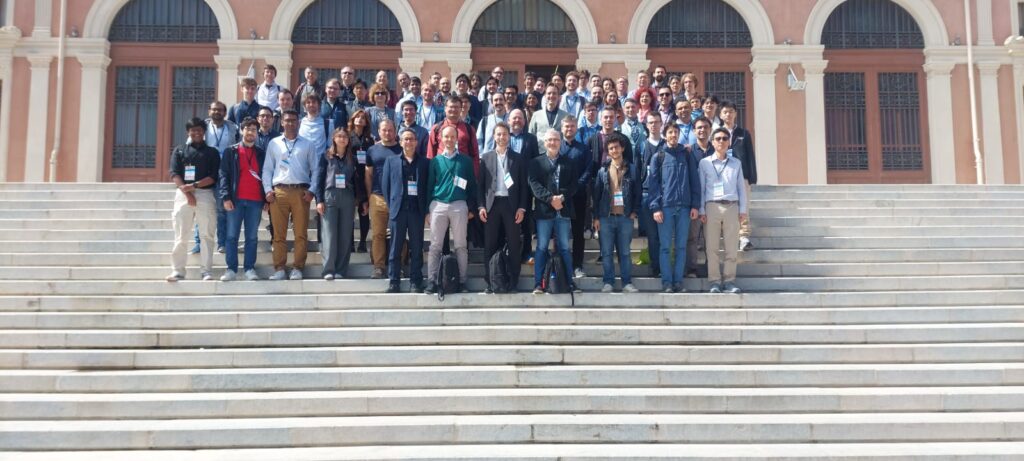Report on Atmospheric Carbon Dioxide and its Relation to Sustainable Development Goals
The Global Carbon Cycle: Natural Sources and Sinks
Carbon dioxide (CO2) is the most significant greenhouse gas, and its atmospheric concentration is regulated by a balance between natural sources and sinks. Understanding this natural cycle is fundamental to appreciating the planetary systems that underpin several Sustainable Development Goals (SDGs), particularly SDG 14 (Life Below Water) and SDG 15 (Life on Land).
- Natural Sources of CO2:
- Outgassing from volcanoes.
- Combustion and natural decay of organic matter.
- Respiration by aerobic organisms.
- Natural Sinks for CO2:
- Terrestrial Sinks: Vegetation absorbs CO2 through photosynthesis, a process vital for SDG 15 (Life on Land), which seeks to protect and restore terrestrial ecosystems.
- Oceanic Sinks: The oceans act as a major carbon sink through two primary mechanisms. The stability of these processes is critical for achieving SDG 14 (Life Below Water).
- The “solubility pump,” where surface seawater containing dissolved CO2 descends to the deep ocean.
- The “biological pump,” where marine organisms, including phytoplankton, absorb CO2. When these organisms die, the carbon in their bodies is transported to the ocean floor.
A long-term equilibrium between these natural sources and sinks historically maintained a stable background level of atmospheric CO2.
Anthropogenic Emissions and the Disruption of Carbon Balance
Human activities have fundamentally disrupted the natural carbon cycle, creating an imbalance that directly challenges the 2030 Agenda for Sustainable Development. Anthropogenic emissions now far exceed the absorption capacity of natural sinks, representing a critical failure in achieving SDG 12 (Responsible Consumption and Production) and requiring urgent progress on SDG 13 (Climate Action).
The primary anthropogenic sources of CO2 emissions are:
- Fossil Fuel Combustion: The burning of coal, oil, and natural gas for electricity, transportation, and heating is the largest source of emissions. This practice is in direct conflict with the objectives of SDG 7 (Affordable and Clean Energy) and SDG 11 (Sustainable Cities and Communities).
- Industrial Processes: The production of materials like cement releases significant amounts of CO2, highlighting the need for innovation in line with SDG 9 (Industry, Innovation and Infrastructure).
- Land Use Change: The burning of forests and clearing of land for other uses destroys critical carbon sinks, directly undermining SDG 15 (Life on Land).
Annually, human activities release approximately 7 gigatons of carbon into the atmosphere. This amount, while only 3 percent of natural emissions, overwhelms the planet’s sinks by an estimated 2–3 gigatons per year, leading to a net accumulation of CO2 in the atmosphere.
Atmospheric CO2 Accumulation and Climate Projections
The excess of emissions over absorption has led to a sustained and accelerating accumulation of atmospheric CO2, the primary driver of climate change and the central challenge for SDG 13 (Climate Action).
- Historical Context: Pre-industrial CO2 levels were approximately 280 parts per million (ppm). Ice core data indicates that for 800,000 years prior, concentrations fluctuated between 180 and 300 ppm.
- Modern Accumulation:
- By 2018, atmospheric CO2 levels reached 410 ppm, a level unprecedented in at least 800,000 years.
- The rate of accumulation has increased from an average of 1.4 ppm per year (1959–2006) to approximately 2.0 ppm per year (2006–2018).
- Future Projections and Radiative Forcing: The warming potential of CO2 increases logarithmically with its concentration. At current emission rates, a doubling of pre-industrial CO2 levels (to 560 ppm) is projected by the mid-21st century. Such a doubling would represent a radiative forcing of approximately 4 watts per square metre, projected to cause a global temperature increase of 2 to 5 °C. This outcome would have catastrophic consequences for all Sustainable Development Goals.
Analysis of Sustainable Development Goals in the Article
1. Which SDGs are addressed or connected to the issues highlighted in the article?
The article discusses the increase of atmospheric carbon dioxide (CO2) due to human activities, which directly relates to several Sustainable Development Goals (SDGs). The primary connections are:
- SDG 13: Climate Action: The entire article focuses on CO2, the most significant greenhouse gas, its accumulation in the atmosphere, and its role in radiative forcing, which are the central issues of climate change.
- SDG 7: Affordable and Clean Energy: The article identifies the “burning of fossil fuels (principally oil and coal, and secondarily natural gas, for use in transportation, heating, and electricity production)” as a primary source of increased atmospheric CO2. This highlights the link between current energy systems and climate change, pointing towards the goals related to clean energy.
- SDG 9: Industry, Innovation and Infrastructure: The text mentions “the production of cement” as another significant anthropogenic source of CO2, connecting the issue to industrial processes and the need for sustainable infrastructure.
- SDG 15: Life on Land: The article states that “the burning of forests and the clearing of land” are anthropogenic sources of CO2. It also identifies “terrestrial vegetation” as a significant natural sink that takes up CO2, linking the health of terrestrial ecosystems directly to atmospheric carbon levels.
- SDG 14: Life Below Water: The text describes oceanic processes, such as the “solubility pump” and the “biological pump,” as crucial carbon sinks. It mentions the role of “marine vegetation and phytoplankton” in absorbing CO2, connecting the health of marine ecosystems to the global carbon cycle.
- SDG 12: Responsible Consumption and Production: The article’s focus on emissions from fossil fuel use, industrial production, and land clearing points to unsustainable patterns of consumption and production that drive the increase in greenhouse gases.
2. What specific targets under those SDGs can be identified based on the article’s content?
Based on the issues discussed, the following specific SDG targets are relevant:
- Target 13.2: Integrate climate change measures into national policies, strategies and planning. The article provides the scientific basis for such measures by detailing the sources, accumulation rates, and warming potential of CO2.
- Target 7.2: By 2030, increase substantially the share of renewable energy in the global energy mix. The article’s emphasis on fossil fuels as the primary source of CO2 emissions directly implies the need to transition to alternative energy sources to meet this target.
- Target 9.4: By 2030, upgrade infrastructure and retrofit industries to make them sustainable… with greater adoption of clean and environmentally sound technologies and industrial processes. The mention of cement production as a CO2 source relates to the need for cleaner industrial processes.
- Target 15.2: By 2020, promote the implementation of sustainable management of all types of forests, halt deforestation, restore degraded forests and substantially increase afforestation and reforestation globally. The article identifies deforestation (“burning of forests and the clearing of land”) as a key source of emissions, making this target highly relevant.
- Target 14.2: By 2020, sustainably manage and protect marine and coastal ecosystems to avoid significant adverse impacts… and take action for their restoration. The article’s description of oceans as critical carbon sinks underscores the importance of protecting these ecosystems to maintain their carbon-sequestering function.
3. Are there any indicators mentioned or implied in the article that can be used to measure progress towards the identified targets?
Yes, the article mentions several quantitative and qualitative indicators that can be used to measure progress:
- Atmospheric CO2 concentration (in ppm): The article provides precise data points for this indicator, such as the increase from a preindustrial level of 280 ppm to 410 ppm by 2018, and the rate of accumulation (“1.4 parts per million (ppm) by volume per year between 1959 and 2006 and roughly 2.0 ppm per year between 2006 and 2018”). This is a primary indicator for SDG 13.
- Annual anthropogenic carbon emissions (in gigatons): The text states that “Anthropogenic emissions currently account for the annual release of about 7 gigatons (7 billion tons) of carbon into the atmosphere.” This measures the total emissions from human activities related to SDG 7, 9, and 15.
- Radiative forcing (in watts per square metre): The article quantifies the warming effect of CO2, stating that total forcing since the industrial age is “approximately 1.66 watts per square metre.” This is a technical indicator for measuring the impact of greenhouse gases (SDG 13).
- Rate of deforestation and land clearing: While not quantified, the article explicitly identifies “the burning of forests and the clearing of land” as a major anthropogenic source of CO2. Therefore, the rate of deforestation is an implied indicator for measuring progress on SDG 15.
- Carbon uptake by natural sinks: The article mentions that human emissions exceed the “offsetting capacity of natural sinks (by perhaps as much as 2–3 gigatons per year).” The capacity of terrestrial and oceanic sinks to absorb carbon is an implied indicator for the health of ecosystems under SDG 14 and SDG 15.
4. SDGs, Targets, and Indicators Table
| SDGs | Targets | Indicators |
|---|---|---|
| SDG 13: Climate Action | 13.2: Integrate climate change measures into national policies, strategies and planning. | Atmospheric CO2 concentration (ppm); Annual anthropogenic carbon emissions (gigatons); Radiative forcing (watts per square metre). |
| SDG 7: Affordable and Clean Energy | 7.2: Increase substantially the share of renewable energy in the global energy mix. | (Implied) CO2 emissions from the burning of fossil fuels for energy production. |
| SDG 9: Industry, Innovation and Infrastructure | 9.4: Upgrade infrastructure and retrofit industries to make them sustainable… and adopt clean and environmentally sound technologies and industrial processes. | (Implied) CO2 emissions from industrial processes such as cement production. |
| SDG 15: Life on Land | 15.2: Promote the implementation of sustainable management of all types of forests, halt deforestation… | (Implied) Rate of deforestation and land clearing; Carbon uptake capacity of terrestrial vegetation. |
| SDG 14: Life Below Water | 14.2: Sustainably manage and protect marine and coastal ecosystems to avoid significant adverse impacts… | (Implied) Carbon uptake capacity of oceanic sinks (e.g., marine vegetation and phytoplankton). |
Source: britannica.com







